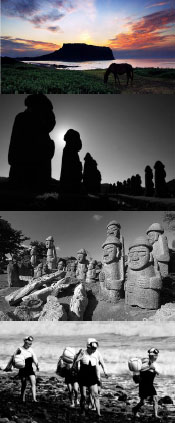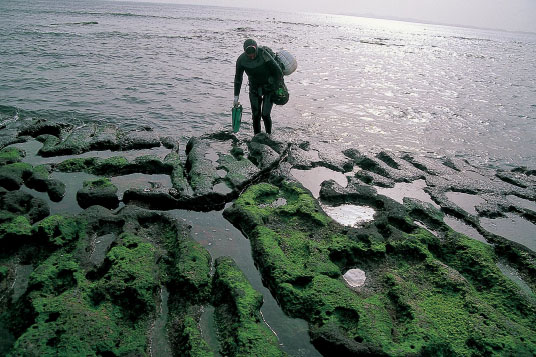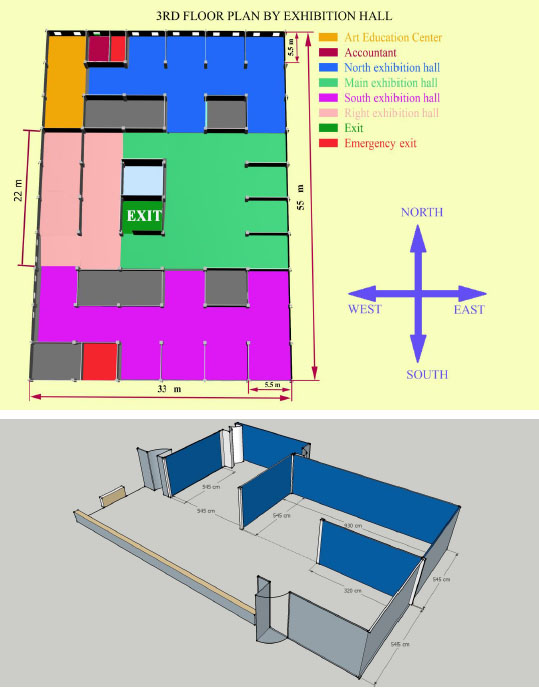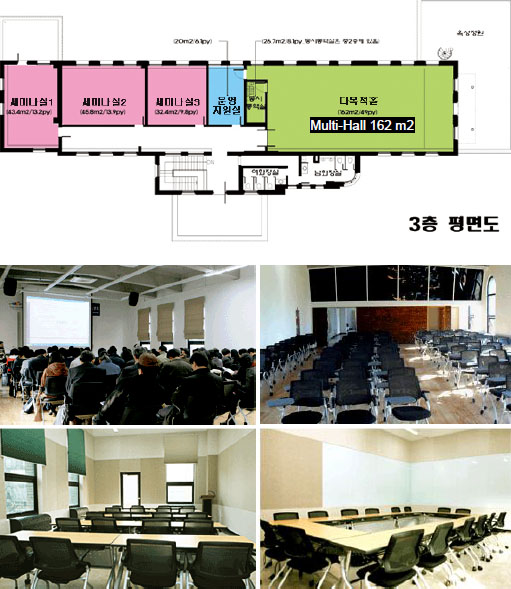
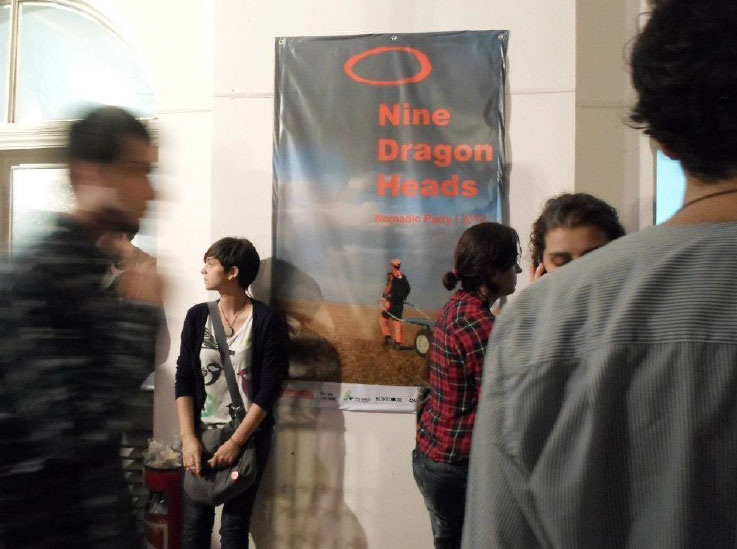
Nine Dragon Heads aspires to generate positive environmental and spiritual legacies for the future. This is in a context where humankind benefits from manipulating and dominating its natural surroundings; regarding the natural environment as a target and challenge for conquest, a test of its ability to transform and possess nature.
Our desire and ingenuity to exploit and develop the natural environment through domination and control implies superiority. Reflecting on the history of the planet however, many species of all forms became extinct when the friendly environmental conditions that firstly nurtured their birth later changed and became hostile.
The question of when will humankind disappear hangs over us. No matter how 'special' we Homo Sapiens think we may be, we have to realise we are a part of the greater natural world and the product of a unique environment that supports our life.
How can we lead a life with understanding and respect for the world of nature? How can we maintain a life peacefully and fairly for the survival of mankind?
Nine Dragon Heads changes ¡®I¡¯ into ¡®we¡¯, a community of artists, who explore and re-consider the relationship and equilibrium between people and the natural environment.
Nine Dragon Heads joins with other communities to share their imagination, experience and ideas through creative art practices, to reveal and celebrate both diverse and common consciousness and to further co-operation.
Nine Dragon Heads aims to further greater understanding of human nature and the world through restorative creative action and engagement and in so doing aims to leave a healthier environment - the heritage of the future - to posterity.
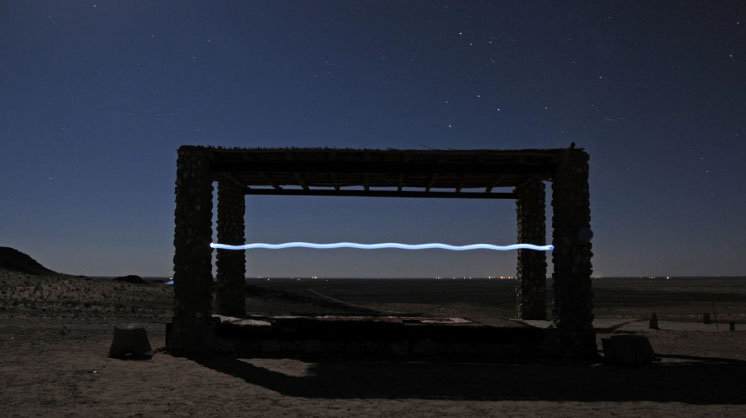
Photo. By Enrique Munoz Garcia

Nine Dragon Heads
Nine Dragon Heads brings together artists from many countries with the aim of stimulating creativity and mutual understanding through shared experience. Founded in 1995 Nine Dragon Heads is an on-going project with an international and transdisciplinary artistic character committed to exploratory and polemic forms of artistic expression. Over the past 18 years Nine Dragon Heads has established and maintained a multi-national community of creative practitioners who share and continue to develop the values of the project. Based on communication and cooperation, Nine Dragon Heads promotes the concept of an open and reciprocal structure for which all participants have a responsibility.
Nine Dragon Heads 'Nomadic Party'
'Nomadic Party' is a collective action and journey planned by Nine Dragon Heads participants that explores and aims to find and extend the expressive layers derived from researching and networking of diverse environmental, city and community experiences through art interventions, performances, installations, notations etc. This embodies the value of genuine mutual communication in creative practice.
'Nomadic Party 2010' traversed the Seoul and Chinese Silk Road from Beijing to Tian Shan (Kazakh)
'Nomadic Party 2012' traversed the Istanbul and Uzbekistan Silk Road from Tashkent to Khiva (Karakalpakstan) and Aral Sea, Tbilisi, Georgia.
Nine Dragon Heads 'Nomadic Party 2013'
¡®Nomadic Party 2013¡¯ will start with a Indoor Exhibition ¡° Ger to Ger ¡± in Ulaanbaatar National Art Gallery and then, take the Gobi Desert, Great Siberian Taiga Forests (called Khovsgol) through Mongolia, to Seoul, KOREA, exploring historical and social realities and experiencing rapidly changing landscapes imbued with human aspiration and exploitation. The underlying motivation and feeling for the future that brings each artist to engage with Nine Dragon Heads also encourages them to work together, learn from one another and seek new ecological models for a peaceful and respectful relationship with the natural environment through their different art practices. Along the journey small exhibition events, collaborations and interactions will take place both discretely and in public. Finally, in Korea, 'Nomadic Party 2013' will be completed and celebrated with an exhibition, performances, artists' talks and presentations; a culmination of the many 'pop up' events from Ulaanbaatar through Gobi Desert and Great Siberian Taiga Forests to Korea that together create a conceptual 'Nomadic Festival Plaza'.
A catalogue publication will follow.
Ger to Ger - Outdoor Exhibition
Period: 22th. August ~31th. August
Coordinator: Bruce Allan, Denizhan Ozer, Gabriel Adams, Park Byoung-Uk. Liaision: Song Wha
Venue : Gobi Desert - Khovsgol
Participants : Responsible for their own art works and can choose the working area freely during on journey. Artist might works impromptu at the trail trip because In the circumstances it would be difficult to find enough time to prepare work
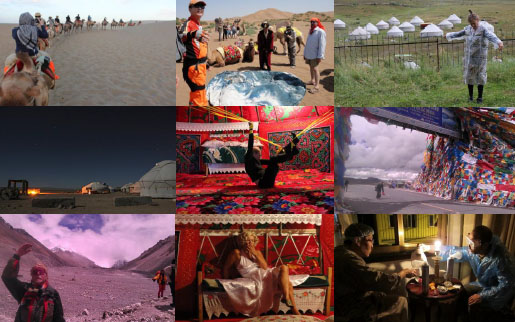
Ger to Ger – Indoor Exhibition
Period 1: 21th ~ 31th. August. National Art Gallery ( Ulaanbaatar. MONGOLIA ) http://eng.art-gallery.mn/
Period 2: 3rd ~16th. September. Gwangju Contemporay Museum http://www.mdmoca.com/
Coordinator: Denizhan Ozer, Gabriel Adams, Nandin Erdene Liaision: Goo So-Young, Jeong Ji-Yoon, Park Eun-Hee
Participation : Artists responsible for bringing suitable works ( Installation, Objects, Video ..etc) and setting up their own art works , also you can make an art work or installation directly in exhibition hall during period
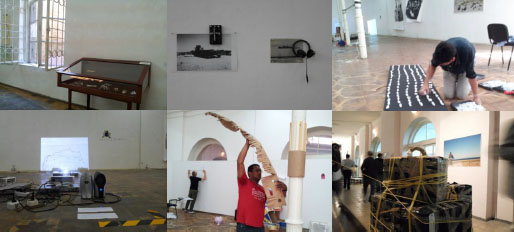
Performance
Period 1: 3th. Sept Gwangju Contemporay Museum http://www.mdmoca.com/
Period 2: 7th. Sept. ARKO ( Korea Art Council) http://www.arkoartcenter.or.kr/
Coordinator : Jessy Rahman, Susanne Muller
Participation : Opened to anybody invited to the 2013 Nomadic Party who wishes to participate
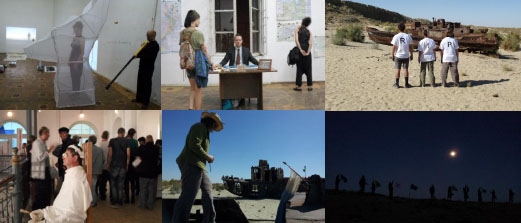
Presentation - Screening & Artists Talk
Period :. 7th. Sept 11:00 ~ 19:00 ARKO ( Korea Art Council. Seoul )
Coordinator: Bruce Allan, Paul Donker Duyvis Liaision: Goo So-Young
Difference Screen – by Bruce Allan & Ben Eastop
Artist Talk : Artist responsible for presentation by own developed works from the Journey

Conference- Round Table & Panel Discussion
Period :. 7th. Sept 17:00 ~ 19:00 ARKO - Arts Council Korea ( Seoul. KOREA ) http://www.arkoartcenter.or.kr/
Coordinator: Annelise Zwez, Liaision: Goo So-Young
Panel : Annelise Zwez, Bruce Allan, Jessy Rahman, Park Byoung-Uk, Paul Donker Duyvis
Partricipation : Opened to anybody invited to the Nine Dragon Heads 2013 Nomadic Party who wishes to participate.

Main Sites Along The Route – Nomadic Party 2013
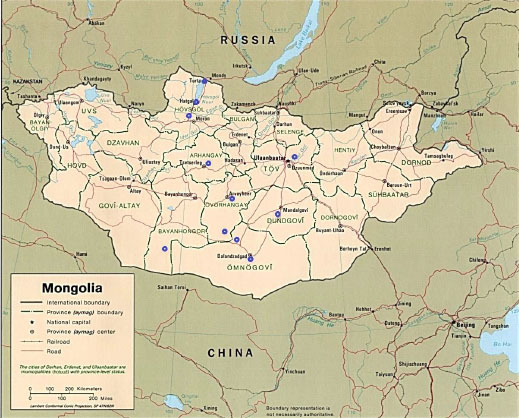
Mongolia ( Ulaanbaatar – Khovsgol – Govi Desert ) http://en.wikipedia.org/wiki/Mongolia
Korea ( Gwangju, Jeju Island, ARKO Seoul )
History of the Silk Road – Mongolian Period
Genghis Khan whose plans were to conquer the Silk Road realized that with the impressive military power of Mongols it would be impossible to control all the routes for long. Therefore, having occupied the northern route Genghis Khan began to methodically destroy Arabian and Turkic cities standing on the southern route. Doing so Genghis Khan tried to stop the intense commodity exchange beyond his control. In the middle of the 13th – 15th centuries when Central Asia, Iran and the steppes of Eurasia were governed by the successors of Genghis Khan, active trade between the East and the West continued and intensified. The Mongol Golden Horde (the territory from Siberia to Eastern Europe governed by the grandson of Genghis Khan, Berke) with the capital in Serai Berk dominated all over the northern intercontinental caravan road going from China via Otrar and Khoresm, the bottom Volga region, Azov, the Crimea and Europe - the huge part of international trade in the 14th – 15th centuries. Mongolian domination stimulated caravan trade between China and the Mediterranean countries. But all benefits from that trade were gained by the Golden Horde. Most caravans followed round Transoxiana, going directly to the Volga to the north from the Caspian Sea, and moved to the Black Sea from there. Khoresm was the southern sector o that northern route continuing to play the role of the link in the chain of regional and intercontinental goods exchange. Urgench was another major center of trade whose markets wee oversaturated.
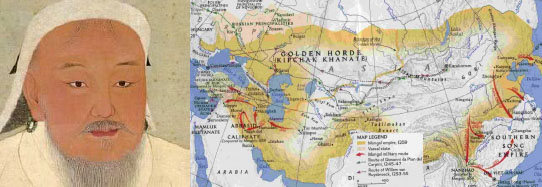
Genghis Khan and the Mongol Empire: Significance to Global History
The year was 1275. The Italian explorer Marco Polo had just arrived in Xanadu, the summer-capital of Kublai Khan¡¯s vast empire. Marco Polo and his companions were astounded at the wealth and culture of the Eastern peoples. Polo¡¯s entourage subsequently spent over 15 years as guests and participants in the Khan¡¯s court. When they returned to Venice in 1292, the stories they brought set the collective European curiosity on fire. The Books of the Marvels of the World set the travel stories and observations of Marco Polo down in words. These books stoked the interest of Europe and played an integral role in fomenting the explosion of exploration that occurred during the 14th through 18th centuries.
What though made Polo¡¯s revolutionary journey possible? For, no fewer than 70 years prior to Polo¡¯s arduous trek, Asia was simply a conglomeration of small, viciously brutal tribes. No European explorer could have ever imagined passing safely through the barbaric wastelands of the East. One man, in short, made exploration and its timeless effect on the globe possible. His name was Genghis Khan. At the end of the 12th century Genghis began his push to unify the tribes of the Mongolian steppe. Rapid success at unification resulted in a new power in the East, the dreaded Mongol hordes. History records that Genghis and his armies began their empire by forging further eastward and subjugating a large portion of modern-day China. The Chinese curiosities and culture kept Genghis occupied temporarily but before long he led his armies west again. In the West, they defeated the perennially mighty Persians, contested with the Turkish Muslims, and finally met their match in the Egyptian Mamelukes. In all, Genghis merged the modern-day countries of Pakistan, Afghanistan, Kazakhstan, Iran, Iraq, Turkey, and large portions of Russia into his already large empire. The Mongol empire, which was amassed by an army on horseback, stretched for an astounding 12.8 million square miles, only fractionally smaller than the modern British Empire. The integral contribution of Genghis¡¯ empire was that it unified the numerous tribes under one ruler. What was once a disjointed land of warring nomads became a land subservient to a preeminent Khan, unified in its homage to a single lord. At his death, Genghis¡¯ empire passed on to his heirs. Kublai Khan, the ruler during the time of Marco Polo¡¯s journey, was the grandson of the great Genghis.
Genghis Khan spearheaded the unification of the tribes and laid the foundation for explorers from the West to reach the fabled lands of Cathay. These early explorations by Marco Polo, explorations which stoked the fire of European explor -ation, would never have been possible had it not been for the rapid expansion of the Mongol Empire under Genghis Khan.

Ulaanbaatar
also Ulan Bator or simply just UB, is the capital and, with a population of around 1,200,000, also the largest city in Mongolia. Ulaanbaatar has a long history, and is only now undergoing an industrial revolution. UB is one of the most drab looking cities on the face of the planet, a travesty really, considering it's the capital of one the most beautiful and hospitable countries on earth. Still, as traditionalists, Mongolians love their capital. They understand that it is not an Asian beauty, but in their hearts they are aware of the city's history, culture and many struggles. Foreigners who take the time to get to know the faces that are hidden behind the gray walls will discover a hospitable and warm-hearted people. Explore the city from different angles, while at the same time do not ignore the abject poverty of many of the ex-nomads who in recent years have come to the city to find work after severe winters have killed their livestock. In this way, you will learn to unlock the city's many secrets and discover an Ulaanbaatar that is not initially revealed to the casual visitor.
Although summer temperatures are around 20°C, the city shivers in sub-zero temperatures for five months of the year, with January and February being the coldest months with temps hovering between -15°C to -30°C. As a result of these prolonged periods of intense cold, the city has an average annual temperature of -1.3°C, giving it the dubious distinction of being the world's coldest capital. Peace Avenue (Enkh Taivny Örgön Chölöö) is the main street and it stretches from east to west through the center. It's the main shopping street and many of the restaurants are along it. The street also passes by the southern edge of the central square, Sükhbaatar Square. Tourist information office is located in the south flank of the Town-hall in the western corner of Suhbaatar square.
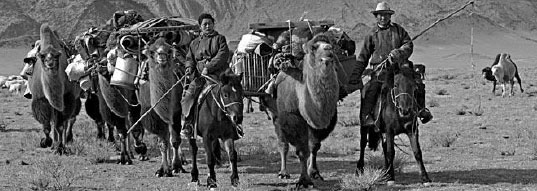
Gobi Desert (Dund Govi. Omno Govi)
The Gobi (mongolian Govi ) is a large desert region in Asia. It covers parts of northern and northwestern China, and of southern Mongolia. The desert basins of the Gobi are bounded by the Altai Mountains and the grasslands and steppes of Mongolia on the north, by the Hexi Corridor and Tibetan Plateau to the southwest, and by the North China Plain to the southeast. The Gobi is most notable in history as part of the great Mongol Empire, and as the location of several important cities along the Silk Road. The Gobi is made up of several distinct ecological and geographic regions based on variations in climate and topography. One is the Eastern Gobi desert steppe Ecoregion, a Palearctic ecoregion in the Deserts and xeric shrublands Biome, home to the Bactrian camel and various other animals. It is a rain shadow desert formed by the Himalaya range blocking rain-carrying clouds from the Indian Ocean from reaching the Gobi territory.

The Gobi desert, one of the world's great deserts, covers much of the southern part of Mongolia. Unlike the Sahara there are few sand dunes in the Gobi; rather you'll find large barren expenses of gravel plains and rocky outcrops. The climate here is extreme. Temperatures reach +40° C. in summer, and -40 in winter. Precipitation averages less than 100 mm per year, while some areas only get rain once every two or three years. Strong winds up to 140 km/h make travel dangerous in spring and fall. Great Gobi National Park is one of the largest World Biospheres, with an area larger than Switzerland. It contains the last remaining wild Bactrian (two-humped) camels, wild ass, and a small population of Gobi bears, the only desert-inhabiting bear.

Gobi Gurvansaikhan National Park (Mongolian: Gobi three beauties nature complex) is a national park in southern Mongolia. The park was established in 1993, and expanded to its current size in 2000. The park, at nearly 27,000 square kilometers, is the largest national park in Mongolia. The park is named for the Gurvan Saikhan Mountains, which translates to the Three Beauties. The name is derived from three subranges, the East, Middle and West Beauty. The range forms the eastern half of the park. The park lies on the northern edge of the Gobi desert. The higher elevations contain areas of steppe. A number of rare plants and animals are found in the park, including the elusive snow leopard and the Gobi Camel. Areas of sand dunes are found, most famously the Khongoryn Els - the Singing Sands. Another major tourist destination is Yolyn Am, a mountain valley that contains a large ice field through most of the year.

Khövsgöl nuur is located in the northwest of Mongolia near the border to Russia, at the foot of the eastern Sayan Mountains. It is 1,645 m above sea level, 136 km long and 262 m deep. It is the second-most voluminous freshwater lake in Asia, and holds almost 70% of Mongolia's fresh water and 0.4% of all the fresh water in the world.
The town of Hatgal is at the southern end of the lake. Its watershed is relatively small, and it only has small tributaries. It gets drained at the south end by the Egiin Gol, which connects to the Selenge and ultimately into Lake Baikal. In between, the water travels a distance of more than 1,000 km, and a height difference of 1,169 m, although the line-of-sight distance is only about 200 km. Its location in northern Mongolia helps form the southern border of the great Siberian taiga forest, of which the dominant tree is the Siberian Larch (Larix sibirica), The lake is surrounded by several mountain ranges.
The highest mountain is the Bürenkhaan / Mönkh Saridag (3,492 m), which has its peak north of the lake exactly on the Russian-Mongolian border. The surface of the lake freezes over completely in winter. The ice cover gets strong enough to carry heavy trucks, so that transport routes were installed on its surface as shortcuts to the normal roads. However, this practice is now forbidden, to prevent pollution of the lake from both oil leaks and trucks breaking through the ice. It is estimated that 30-40 cars have sunk into the lake over the years.

Ecological significance
Khövsgöl is one of seventeen ancient lakes worldwide more than 2 million years old and the most pristine (apart from Lake Vostok).and is the most significant drinking water reserve of Mongolia. Its water is potable without any treatment. Hovsgol is an ultraoligotrophic lake with low levels of nutrients and primary productivity and high water clarity (secchi depths > 18 m are common). Hovsgol's fish community is species poor compared to that of Lake Baikal. Species of commercial and recreational interest include Eurasian perch (Perca fluviatilis), burbot (Lota lota), lenok (Brachymystax lenok), and the endangered endemic Hovsgol grayling (Thymallus nigrescens). Though endangered by poaching during its spawning runs, the Hovsgol grayling is still abundant throughout much of the lake.
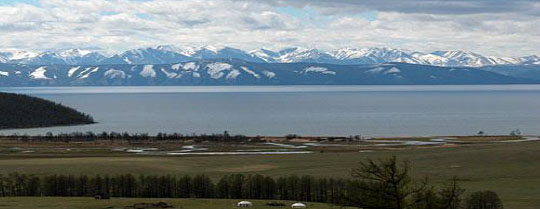
The Lake area is a National Park bigger than Yellowstone and strictly protected as a transition zone between Central Asian Steppe and Siberian Taiga. Despite Hovsgol's protected status, illegal fishing is common and prohibitions against commercial fishing with gillnets are seldom enforced. The lake is traditionally considered sacred in a land suffering from arid conditions where most lakes are salty. The Park is home to a variety of wildlife such as ibex, argali, elk, wolf, wolverine, musk deer, brown bear, Siberian moose and sable.
The Hövsgöl (Khövsgöl) Long-term Ecological Research Site (LTERS) was established in 1997 and an extensive research program began soon thereafter. Now, part of an international network of long-term study sites, the Hövsgöl LTERS provides a stage for nurturing Mongolia's scientific and environmental infrastructures, studying climate change and developing sustainable responses to some of environmental challenges facing the lake and its watershed.
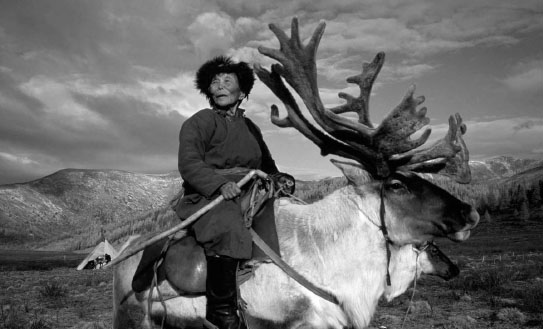
Ger to Ger - Adventure Mongolia
JEEP Safari One of the most exciting destinations
travel along the tracks of the Nomadic Caravans
Explore the wonders of Mongolia¡¯s scenic and cultural treasures on foot and horseback, atop a Bactrian camel or in four-wheel-drive vehicles. Adventure Mongolia! is an active trip designed for enthusiastic explorers who want to travel off the beaten track, from the meadows and pine-forested mountains of the Central Mongolian countryside to the dramatic landscapes of the legendary Gobi Desert.
You will drive across the deserts, immense steppes, little oases, beautiful mountain ranges, border of the great Siberian taiga forest. The route you are going to cover was carefully researched. Our professional and experienced drivers will assist you in your journey. Besides, you will visit the Ulaanbaatar, Dund Govi, Omno Govi (Khongryn Els), Gurvansaikhan National Park, included in Khövsgöl nuur National Park
The vehicle offered for this journey is comfortable off-road vehicles and crossovers (6 vehicles). The leading car is supplied by GPS navigation system. In 10days you will cover the route of hundreds kilometers from the mongolia capital Ulaanbaatar to the Gobi Desert and Great Siberian Taiga Forests.
You will be escorted by professional local guides throughout the entire tour. During your journey you will stay in traditional Ger (Yurt camps). Besides, you will be provided with necessary camping equipment for certain part of your itinerary. This tour is designed for travelers who seek for discoveries and adventures. Explore the vast area of Mongolia and marvel its beauty! Come and enjoy unforgettable and unique journey of a lifetime!
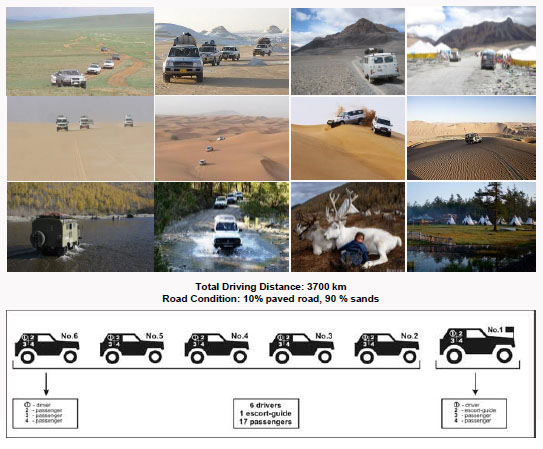
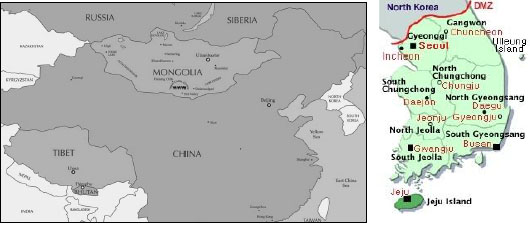
Jeju Island ( 42 Chujado Island Group)
Jeju-do (transliterated Korean for Jeju Province, short form of Jeju Special Self-governing Province or Jeju Island) is the special autonomous province of South Korea, situated on and coterminous with the nation's largest island. Jeju-do lies in the Korea Strait, southwest of Jeollanam-do Province, of which it was a part before it became a separate province in 1946. Its capital is the city of Jeju.The island contains the UNESCO Natural World Heritage Site Jeju Volcanic Island and Lava Tubes
